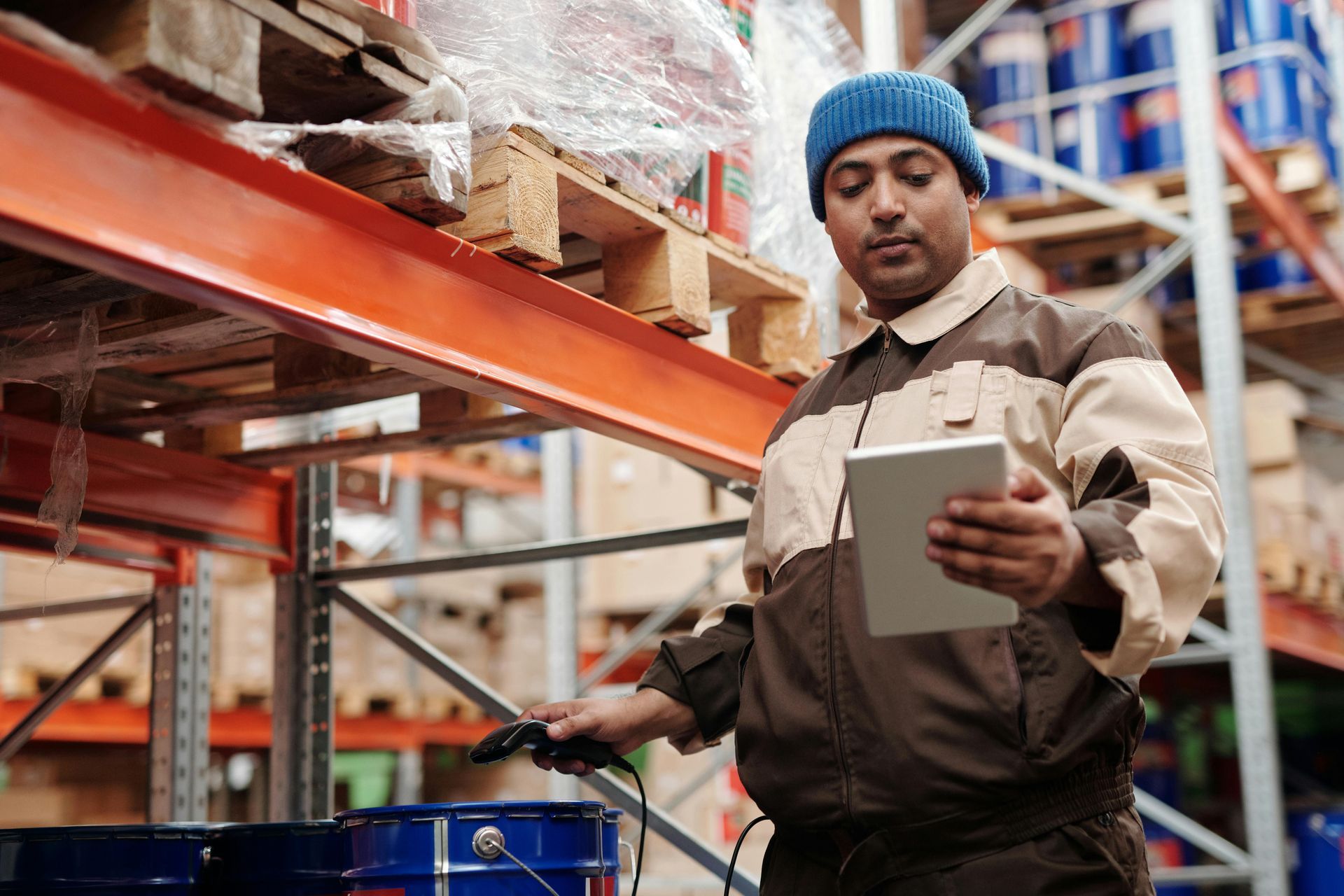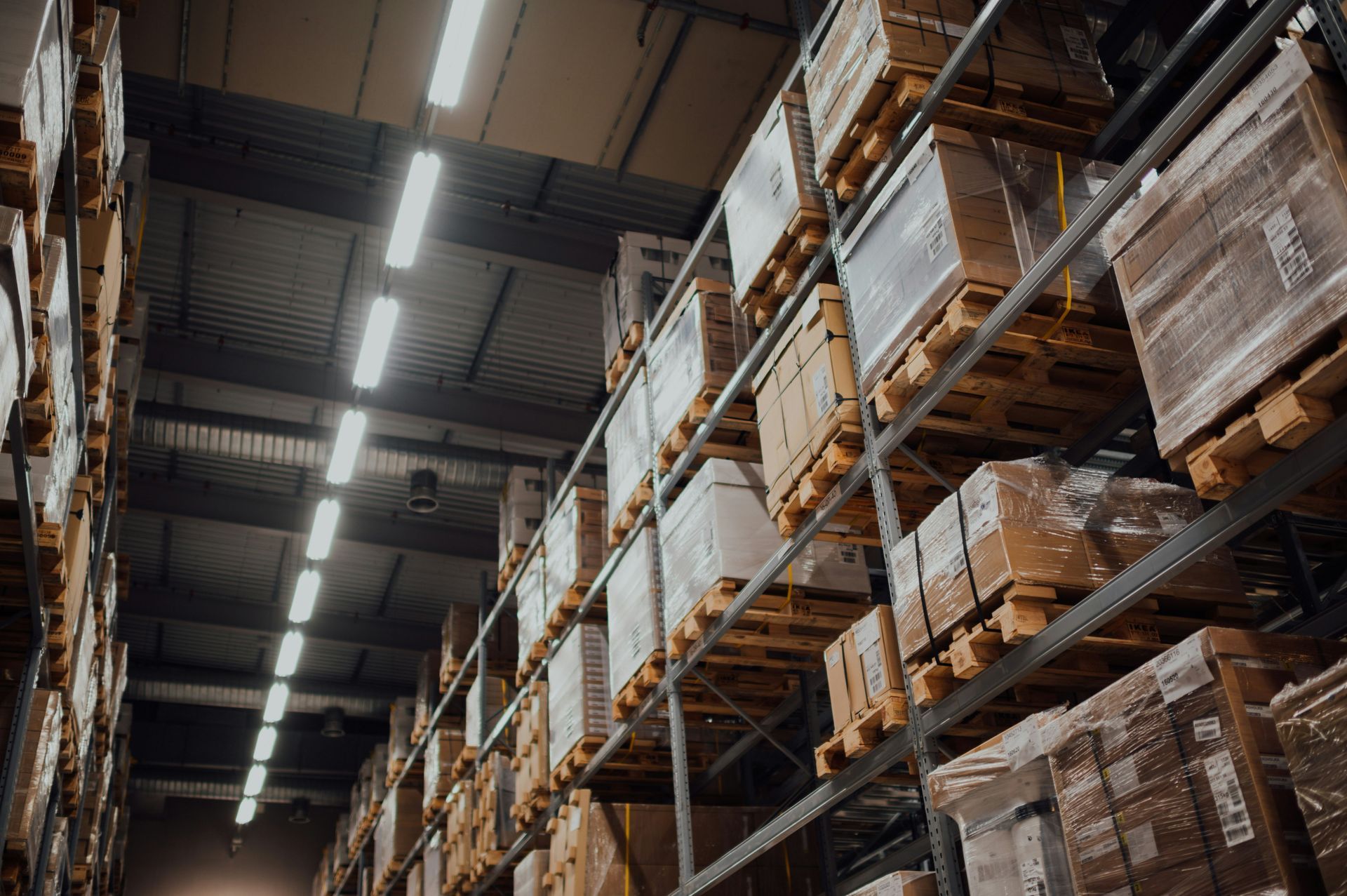The Evolution of Logistics
Logistics is the backbone of the global economy.
Whether it's getting raw materials to a manufacturer, restocking store shelves, or delivering online orders to your doorstep, logistics ensures that goods move efficiently from point A to point B.
While most people only think about logistics when there's a delay or shortage, the industry has a long and fascinating history—and it's evolving faster than ever.
Explore the origins of logistics, today's warehouse and logistics trends, and the future.
A Brief History of the Logistics Industry
The story of logistics begins thousands of years ago. Early civilizations, such as the Egyptians and Romans, relied on logistics to manage the transport of food, building materials, and goods across large territories.
The development of trade routes, such as the Silk Road, enabled the long-distance exchange of spices, textiles, and other valuable commodities.
The Industrial Revolution brought about a significant shift. With the rise of factories, railroads, and steamships, businesses could manufacture and move goods faster and farther than ever before. Warehousing became more systematic, and supply chains began to form.
In the 20th century, logistics played a pivotal role in military operations during the World Wars. Strategies used to deliver weapons, food, and supplies on a massive scale helped formalize the principles of modern logistics.
After World War II, globalization and containerized shipping helped birth today's logistics giants, enabling global trade on an unprecedented scale.
The Rise of Technology and Globalization
By the 1980s and 1990s, logistics was becoming more digitized.
The introduction of barcodes and early inventory management software made tracking goods throughout the supply chain easier. Just-in-time (JIT) manufacturing, popularized initially in Japan, reduced waste by ensuring materials arrived exactly when needed.
As the internet matured in the early 2000s, e-commerce transformed logistics. Consumers expected faster shipping, more transparency, and flexible delivery options.
To meet these demands, businesses turned to third-party logistics (3PL) providers, who specialized in handling warehousing, transportation, and fulfillment services.
Eventually, fourth-party logistics (4PL) firms emerged, offering end-to-end supply chain management.

Current Warehouse and Logistics Trends
Today's logistics industry is defined by rapid innovation and increasing complexity. Warehouses are no longer just storage spaces—they're high-tech hubs that streamline operations using automation, robotics, and data.
Automation
Automation and robotics are leading the charge. Automated Storage and Retrieval Systems (AS/RS) and autonomous mobile robots (AMRs) are becoming common in modern facilities, improving speed and accuracy while reducing labor costs.
Data Management
Data and visibility are also crucial. Real-time tracking tools, IoT devices, and cloud-based warehouse management systems (WMS) give companies deep insight into their operations. Predictive analytics helps identify bottlenecks, optimize routes, and improve customer satisfaction.
Sustainability Efforts
Sustainability is another major trend. Businesses are under pressure to reduce their environmental impact. That means investing in electric delivery vehicles, optimizing packaging, and designing energy-efficient warehouses.
Labor Management
At the same time, the industry is grappling with labor challenges. A shrinking labor pool and high turnover rates make finding and keeping skilled workers difficult. Companies are responding by investing in training programs, upskilling current employees, and relying more heavily on technology.
Fulfillment Obligations
Finally, omnichannel fulfillment is becoming the norm. With customers shopping online, in-store, and through apps, logistics providers who specialize in that area should ensure seamless fulfillment across multiple platforms.
Note: Gustine Logistics does not offer fulfillment services
The Future of Logistics
Looking ahead, the logistics industry will continue to evolve, fueled by new technology and changing customer expectations.
Artificial intelligence and machine learning will become increasingly central. These tools enable more intelligent inventory forecasting, route optimization, and dynamic pricing models. AI-powered chatbots and virtual assistants may also improve communication and customer service.
Drones and autonomous delivery vehicles are on the horizon.
While still in the testing phase in many regions, these technologies could revolutionize last-mile delivery by reducing time and fuel costs.
Blockchain holds promise for increasing supply chain transparency and security. By creating tamper-proof records of every transaction and movement, companies can reduce fraud, ensure compliance, and increase trust.
One key focus for the future is resilience. After global disruptions like the COVID-19 pandemic and geopolitical tensions, businesses are rethinking their supply chain strategies.
Diversification, near-shoring, and more flexible networks are all explored to mitigate risk.
Lastly, we'll see more customized logistics solutions, especially as businesses seek to tailor services to different markets and customer preferences. Hyper-personalization will extend from the retail experience to how and when deliveries occur.

What It Means for Your Business
Whether running a warehouse, managing a retail operation, or coordinating global shipments, staying informed about logistics trends is essential. The right logistics strategy can improve efficiency, reduce costs, and give your business a competitive edge.
Working with an experienced, forward-thinking logistics partner is one of the smartest moves you can make.
As the industry continues to evolve, companies that invest in innovation, sustainability, and flexibility will thrive.
Work With Gustine Logistics
The logistics industry has come a long way, from ancient trade routes to AI-powered warehouses.
As we move into the future, technology and global trends will continue to reshape how goods are moved, stored, and delivered.
By understanding this evolution—and staying adaptable—you can position your business for long-term success in an increasingly complex world.
Do you need help optimizing your logistics strategy?
Contact us today to learn how we can help you stay ahead of the curve.


